A hip roof is a type of roof with four sloping sides, offering durability and aesthetic appeal. This guide will explain what a hip of a roof is, its key advantages, and the various styles available. Discover why this roofing style might be the perfect choice for your home.
Key Takeaways
- A hip roof features four sloping sides that create a pyramid-like shape, providing enhanced stability and aesthetic appeal compared to gable roofs.
- Different types of hip roofs, such as pyramid and cross-hipped roofs, offer unique designs suitable for various architectural needs and preferences.
- While hip roofs have higher initial construction costs, their durability and low maintenance requirements make them a wise long-term investment.
What is a Hip Roof?
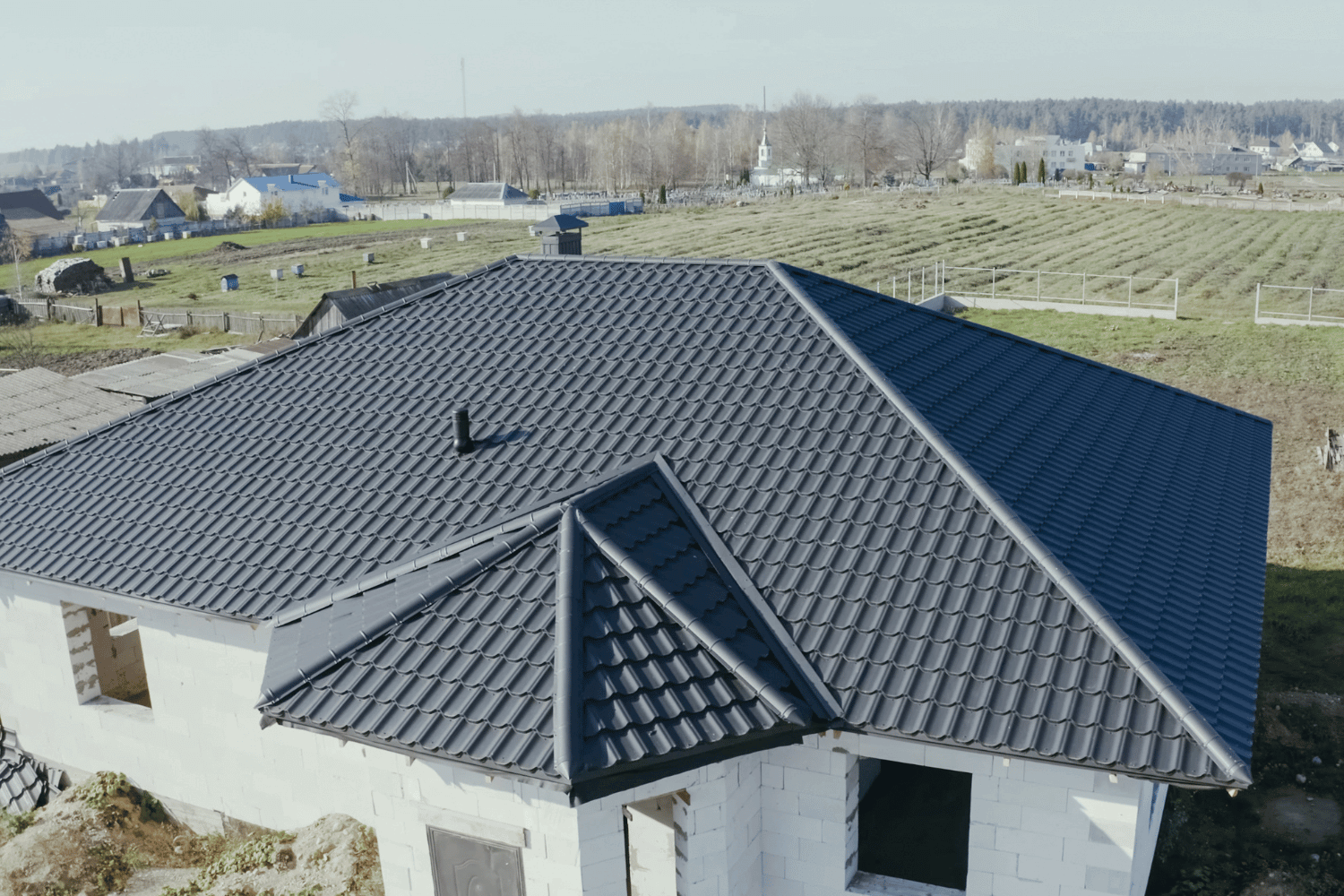
A hip roof is a roof design that slopes on all four sides, forming a pyramid-like structure. This design consists of one horizontal ridge and four sloping sides, which culminate in a peak, creating an overall symmetrical shape. Unlike gable roofs, which have two vertical ends, hip roofs have sloping sides that extend down to the walls, enhancing their stability and aesthetic appeal. A half hipped roof is a variation that combines elements of both hip and gable roofs.
Hip roofs are particularly favored for their elegant and visually appealing design, especially when compared to gable roofs. They also offer superior stability against extreme weather conditions, distributing weight evenly across all four sides.
Key Characteristics of Hip Roofs
Hip roofs are defined by their four sloping sides that converge at a peak, forming a symmetrical shape. This balanced design enhances both visual appeal and structural stability. Hip roofs slope down towards the walls, unlike gable roofs with vertical ends, aiding in water drainage and preventing potential water damage.
The stylish and visually appealing design of hip roofs makes them a popular choice among homeowners. Their symmetrical appearance fits well with various architectural styles, from traditional to modern, adding value and charm to any property. The choice of roof style can significantly enhance the overall aesthetic.
Their design is also effective for lower-sloped roofs, providing flexibility without sacrificing aesthetics.
Types of Hip Roofs
There are several types of hip roofs, each with unique characteristics and applications. One common type is the pyramid hip roof, which has four sides that form a pyramid shape, making it ideal for smaller buildings.
Another type is the cross-hipped roof, which forms a cross shape and creates additional ridges at right angles to the main ridge, enhancing its aesthetic appeal. The mansard roof is another variation, featuring two different sloping angles on each side. The steeper lower slope provides unique visual interest and additional space within the roof structure.
These diverse types of hip roofs offer homeowners and architects a range of options to suit different building designs and preferences.
Advantages and Disadvantages of Hip Roofs
Hip roofs are renowned for their excellent wind resistance and aesthetic appeal, making them a popular choice for homeowners. Their design provides better stability against wind and snow, ensuring durability and safety during storms. The efficient drainage system of hip roofs prevents water pooling and leaks, further enhancing their functionality.
The intricate design of hip roofs results in higher construction costs due to the need for more materials and skilled labor. Improper installation can make hip roofs prone to leaks, leading to increased maintenance over time.
Despite these drawbacks, their aesthetic and functional benefits often outweigh the downsides, making hip roofs a valuable investment.
Detailed Look at Hip Roof Design
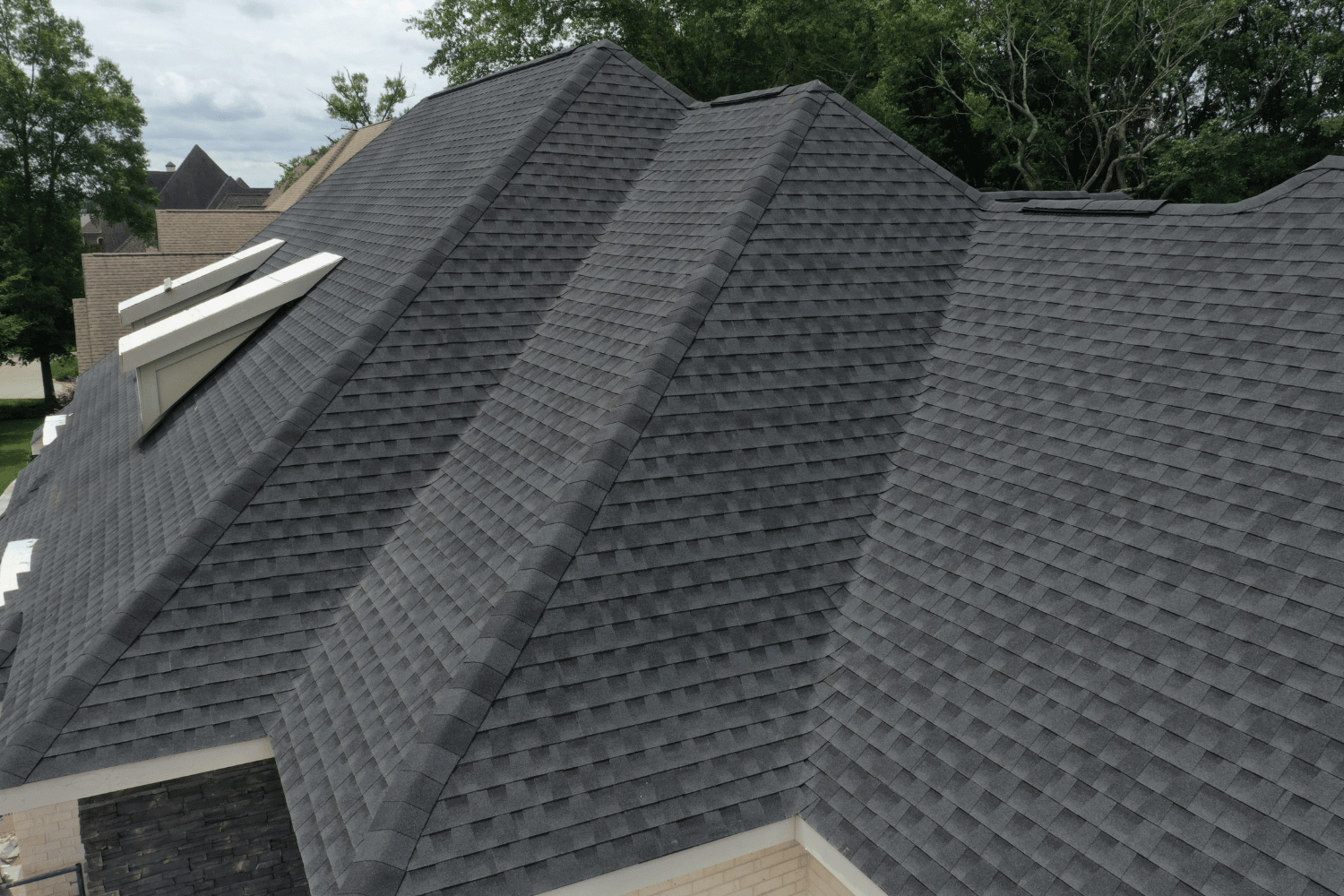
The design of a hip roof is integral to its performance and aesthetic appeal. With sloping sides on all four sides, this design is crucial for effective water drainage and preventing water accumulation. The slopes direct rainwater towards the eaves, minimizing the risk of leaks and water damage.
Selecting the appropriate materials for a hip roof is crucial. Roofing material choices influence durability, aesthetic appeal, and overall performance. Materials like asphalt shingles and metal roofing offer distinct advantages to meet various needs and preferences.
Slope and Structure
The slope and structure of a hip roof play a significant role in its functionality. The downward sloping sides ensure effective water drainage, preventing water from pooling on the roof. The slope must be adapted to local weather conditions to maximize the roof’s performance and longevity.
Determining the correct pitch requires considering the building’s architectural style, local climate, and personal preferences. The stability and effectiveness of a hip roof depend on these calculated slopes, enhancing both aesthetics and functionality.
Material Selection for Hip Roofs
Selecting appropriate roofing materials ensures the longevity and performance of hip roofs. Asphalt shingles are a popular choice due to their affordability and wide variety of styles. Metal roofing, known for its durability and energy efficiency, is an excellent option for hip roofs in storm-prone areas.
Tile and slate roofing materials are appreciated for their timeless aesthetics and exceptional durability, despite their higher initial costs. Consider material durability and weather resistance to ensure the roof withstands elements and provides long-term protection.
Comparing Hip Roofs with Gable Roofs
Key differences emerge when comparing hip and gable roofs:
1. Hip roofs lack visible gables, offering a sleek and smooth appearance.
2. Slopes are visible from all angles in hip roofs, unlike gable roofs which have two vertical ends.
3. The distinctive design of hip roofs makes them generally stronger and more durable.
Hip roofs offer better wind resistance due to their aerodynamic shape, making them suitable for regions with severe weather. However, the complexity of hip roofs makes them more expensive to construct and maintain compared to gable roofs. Despite these higher costs, hip roofs are often preferred for their durability and aesthetic value.
Structural Differences
Structurally, hip roofs consist of slopes on all sides, creating a self-bracing structure that enhances stability. This contrasts with gable roofs, which typically
Performance in Various Weather Conditions
Hip roofs excel in various weather conditions due to their enhanced durability and stability. Their design provides superior wind resistance, making them ideal for regions that experience high winds and severe weather. The aerodynamic shape of hip roofs allows them to effectively deflect winds, which is crucial in coastal regions prone to storms.
In snowy areas, hip roofs reduce snow load accumulation with their inward slopes. Conversely, gable roofs suit milder conditions but may struggle under severe wind and snow compared to hip roofs.
Cost Comparison
Building a hip roof typically costs between $20,000 and $50,000, influenced by slope, materials, and roof area. Their intricate design results in higher construction costs, averaging $8 to $12 per square foot. The need for skilled labor further contributes to the elevated costs.
Although initially more expensive, hip roofs often incur lower long-term maintenance costs, making them a worthwhile investment. The durability and stability of hip roofs can result in overall savings over time, offsetting the higher upfront costs.
Geographic Influence on Roofing Choices
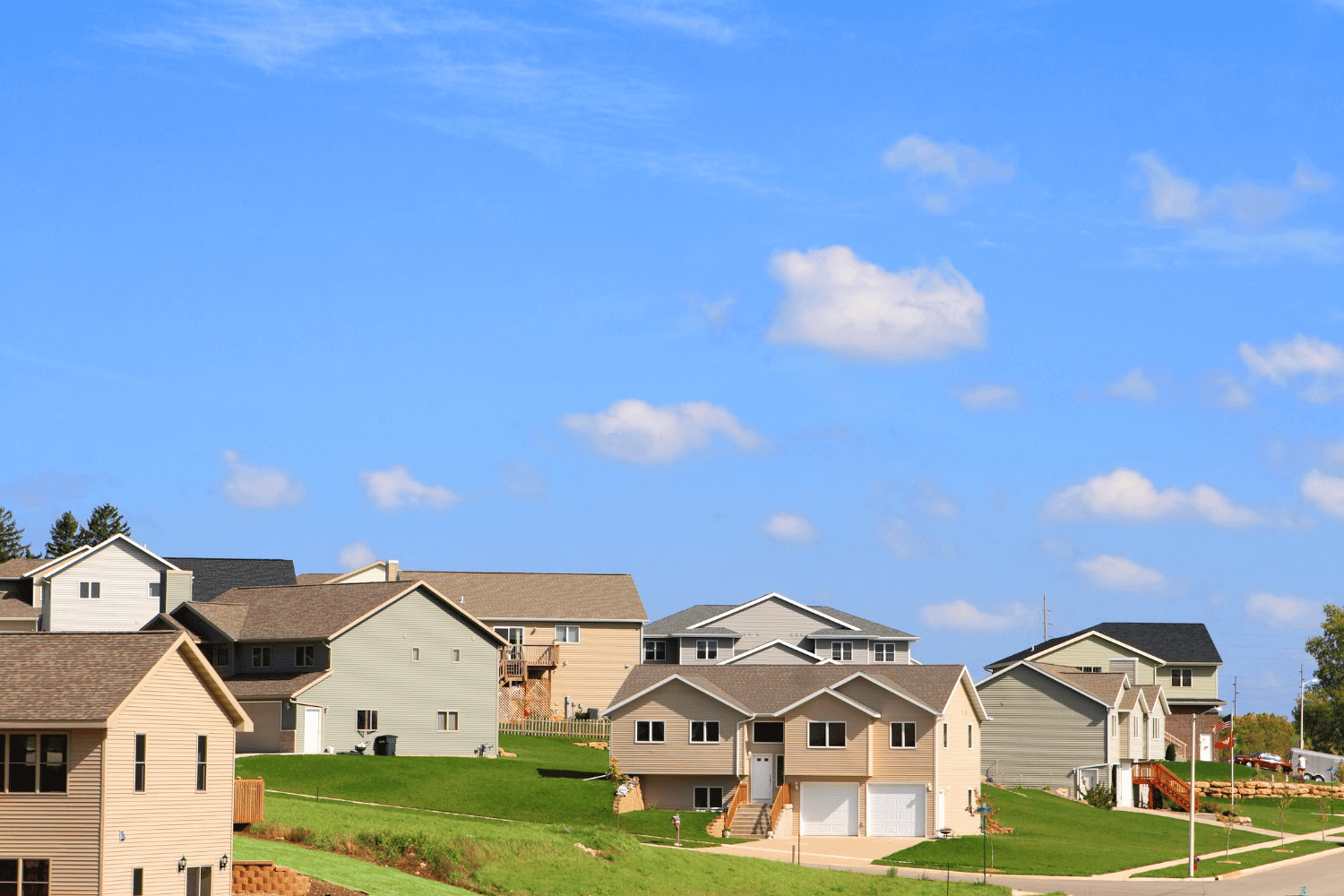
Geographic location significantly affects the choice of roofing style and roof styles. Severe weather-prone regions often choose specific roof types for better protection. Hip roofs excel in high winds compared to gable roofs, making them preferable in storm-prone areas.
In harsh climates, hip roofs are favored for stability and sleek design, offering enhanced protection. Awareness of geographic influences helps homeowners make informed roofing decisions.
Hip Roofs in Coastal Areas
Hip roofs are ideal for hurricane-prone areas, making them popular in coastal regions. Their aerodynamic design provides superior wind performance, essential for withstanding storms. Additionally, using hipped roofs in these areas may lead to insurance discounts, highlighting their cost-effectiveness.
The stability and durability of hip roofs offer peace of mind for coastal homeowners, ensuring protection against elements. This makes hip roofs a practical and financially wise choice for hurricane-prone areas.
Gable Roofs in Snowy Regions
Gable roofs are advantageous in heavy snowfall regions due to their design, which encourages quick snow shedding and enhances curb appeal gable roofs. The steep slopes of clipped gable roofs efficiently shed snow, reducing accumulation risks and structural problems.
In snowy regions, a steeper pitch is recommended for easy snow shedding and damage prevention. While gable roofs may face higher snow accumulation, their design suits heavy snowfall areas, providing effective snow management.
Designing and Building a Hip Roof
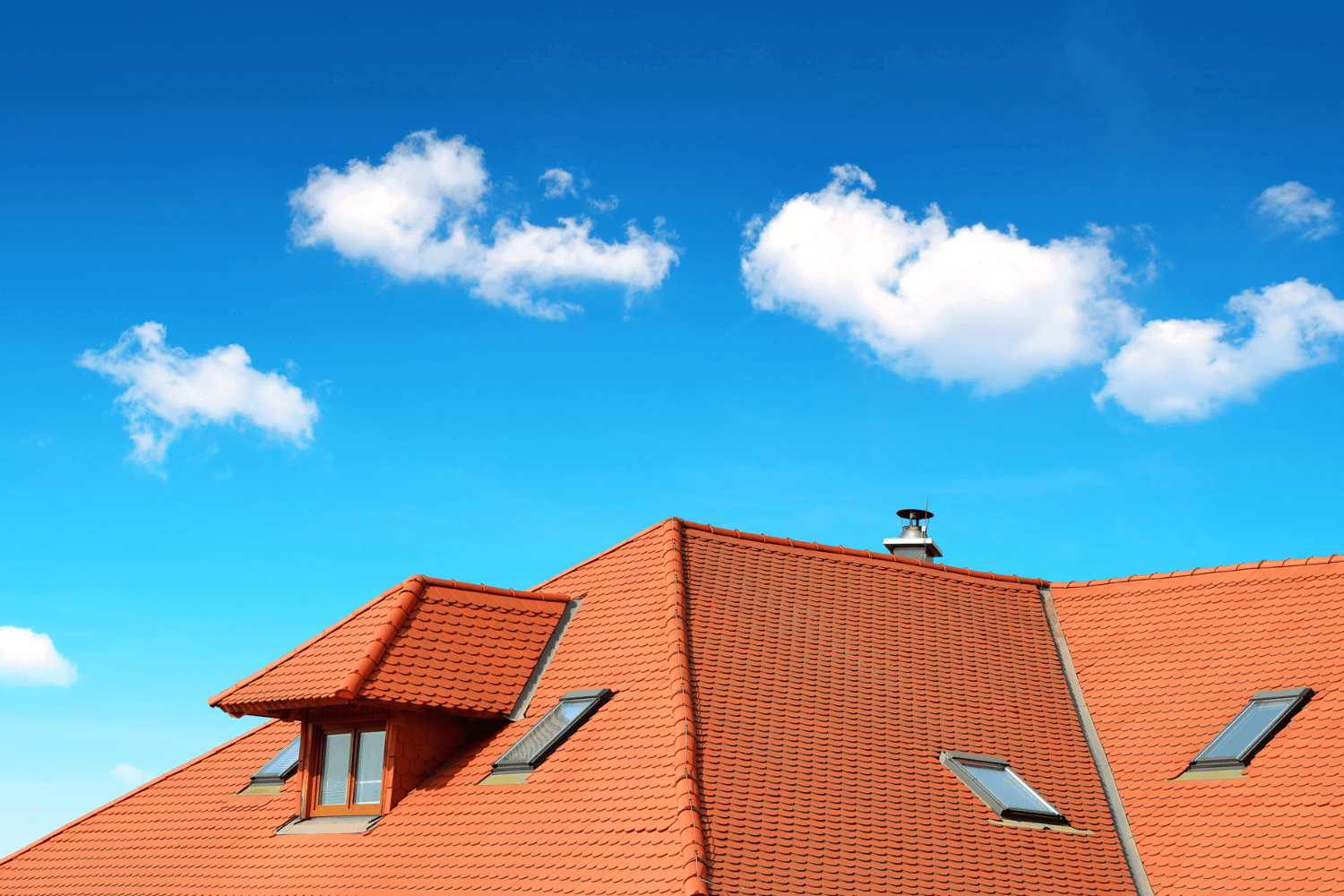
Building a hip roof entails careful planning and precision. Consider aesthetic, slope, and materials that align with the building’s architecture. Accurate measurements and quality workmanship are crucial during construction to avoid common pitfalls.
Accurate blueprints are essential, serving as the foundational guide for construction. Precise measurements and the right tools significantly enhance roof stability and appearance.
Planning and Blueprints
Accurate blueprints are crucial for the successful execution of any roofing project, especially hip roofs. Blueprints detail every aspect of the roof design, from slope angles to rafter placement.
During planning, consider the desired aesthetic and the building’s specific architectural style. This ensures that the hip roof not only functions effectively but also complements the overall design of the house.
Construction Tips
Precision in measurements is vital to avoid issues during construction. A laser distance measuring device enhances measurement accuracy, ensuring perfect component fit.
Secure ridge beam positioning before attaching rafters ensures stability. Installing jack rafters between hip and common rafters adds structural support, ensuring weather resilience.
Maintenance and Longevity of Hip Roofs
Proper upkeep significantly extends hip roofs’ lifespan. Regular tasks like clearing gutters and downspouts prevent water backflow and roof damage. Routine inspections catch potential issues early, preventing minor problems from escalating.
Hip roofs require less maintenance as their slopes prevent debris accumulation. Effective shedding of weather elements significantly contributes to roof longevity. Regular inspections and proper drainage systems are still necessary to maintain structural integrity.
Regular Inspections
Frequent inspections catch issues like leaks or shingle wear before they escalate. Homeowners should check for cracked tiles, damaged flashing, and water infiltration during inspections.
Inspecting and maintaining flashing around joints and seams prevents leaks. Debris can trap moisture, so regularly cleaning the roof surface prevents mold growth and ensures proper ventilation.
DIY Maintenance Tips
When doing DIY maintenance, using appropriate equipment and prioritizing safety is paramount. The roof slopes of hip roofs reduce debris accumulation by effectively shedding weather elements.
Regularly clearing gutters, checking for damaged shingles, and ensuring proper ventilation maintain the roof’s health. These simple yet effective practices can significantly extend a hip roof’s lifespan.
Understanding the Costs Involved
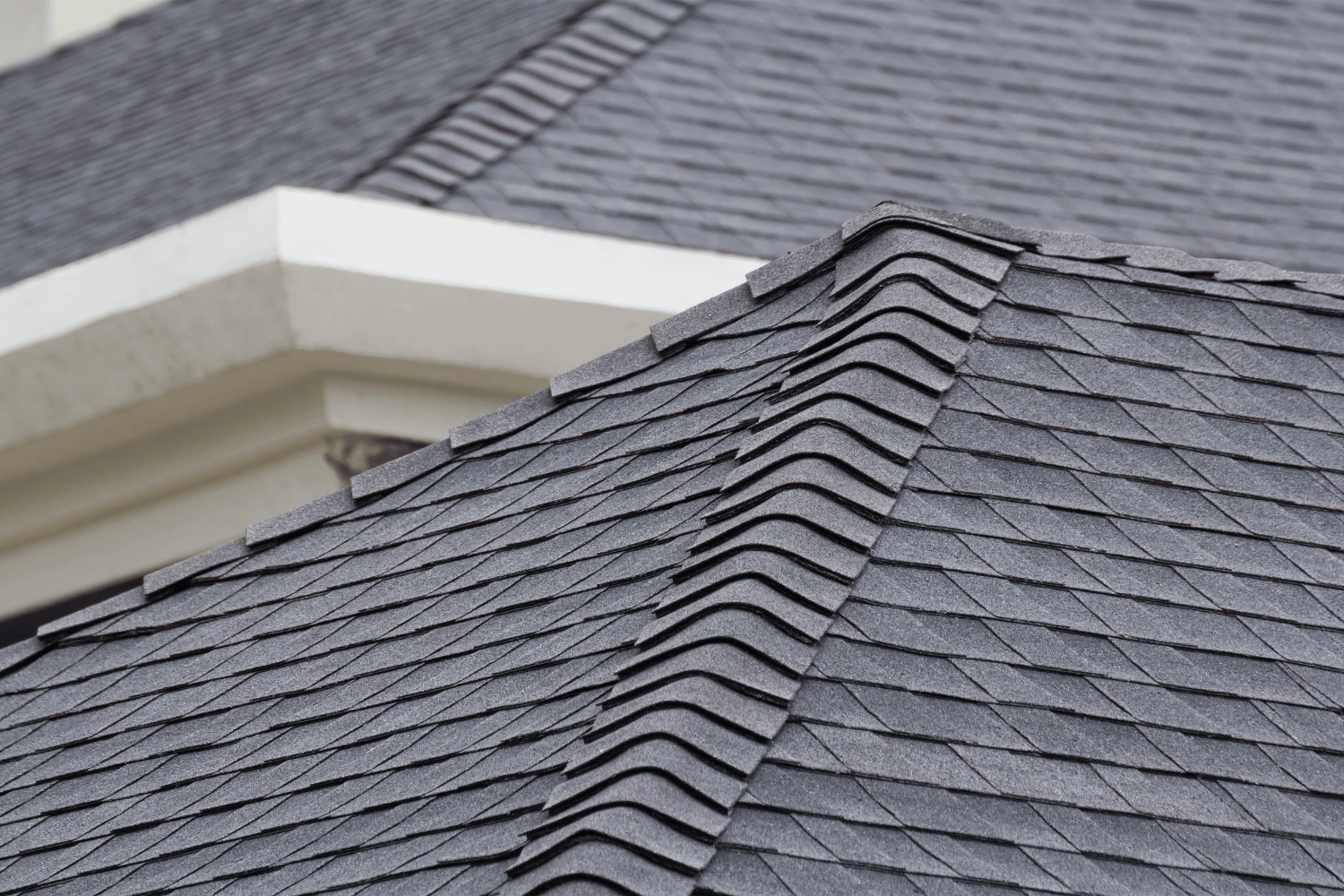
Building a hip roof incurs higher initial costs due to the complex design and additional materials requiring more labor. Investing in a hip roof can save money on long-term maintenance and repairs, offsetting the higher initial costs.
Regular inspections are necessary to spot early damage, as hip roofs are typically more complex to maintain. Understanding these costs and planning accordingly helps homeowners make informed roofing decisions.
Initial Construction Costs
Typical costs for constructing a hip roof range between $34,000 and $68,000. Factors contributing to higher costs include the complex design, skilled labor requirement, and additional materials.
The complexity of hip roof design results in higher construction costs. Other influencing cost factors include roof size, location, and specific materials used.
Long-Term Maintenance and Repairs
Investing in a hip roof can save on long-term maintenance and repairs, offsetting higher initial costs. Hip roofs are a solid long-term investment due to their durable construction and design, reducing the likelihood of severe issues.
Total expenses for hip roofs include initial construction, maintenance, and unexpected repairs throughout their lifespan. This holistic understanding of costs helps homeowners better plan for their roofing projects.
Summary
In summary, hip roofs offer a blend of aesthetic appeal and practical advantages that make them a popular choice for homeowners. Their symmetrical design, superior stability in extreme weather conditions, and effective water drainage are just a few of the benefits they provide.
While hip roofs may have higher initial construction costs, their long-term durability and lower maintenance needs make them a worthwhile investment. By understanding the various types of hip roofs, their design considerations, and maintenance tips, homeowners can make informed decisions about their roofing projects.
Frequently Asked Questions
What is a hip roof?
A hip roof slopes on all four sides, creating a stable and visually appealing pyramid-like shape. It’s a smart choice for both durability and style!
How does a hip roof compare to a gable roof in terms of weather resistance?
Hip roofs are generally more weather-resistant than gable roofs, especially in high winds, making them a better choice for areas prone to storms. So if you’re looking for stability during harsh weather, a hip roof is worth considering.
What are the main types of hip roofs?
The main types of hip roofs are pyramid hip roofs, cross-hipped roofs, and mansard roofs, each offering distinct styles and benefits. Choosing the right one can enhance both the look and functionality of your home.
What should be considered when selecting materials for a hip roof?
When picking materials for a hip roof, focus on durability, weather resistance, and how it looks with your home. Options like asphalt shingles, metal, and tiles are popular choices for a reason!
Why are hip roofs popular in coastal areas?
Hip roofs are a great choice for coastal areas because their aerodynamic design helps them withstand strong winds and storms, making homes more stable and safer. It’s all about keeping your peace of mind when the weather gets rough!





